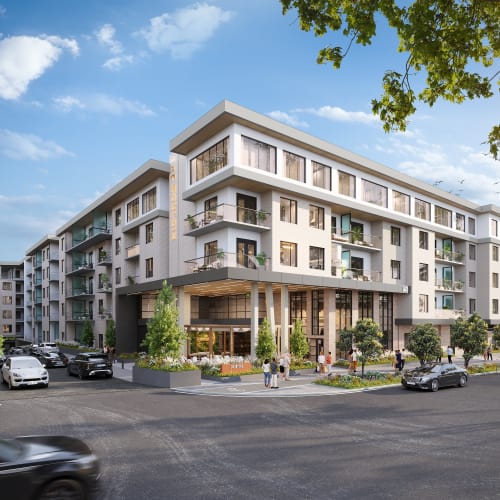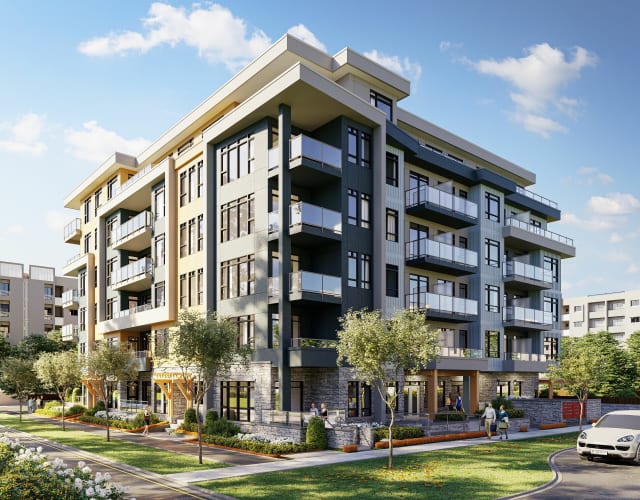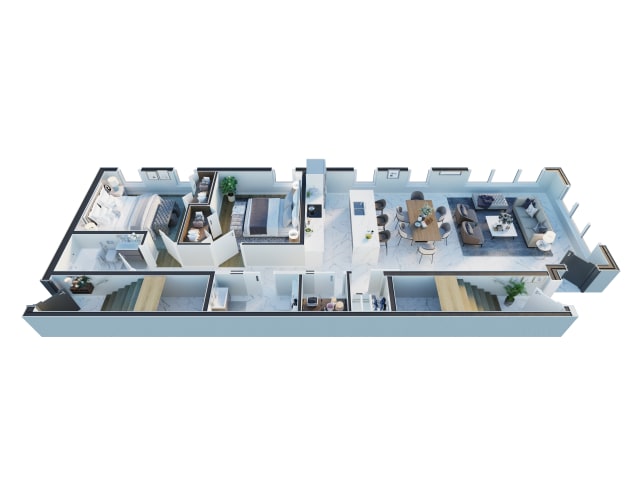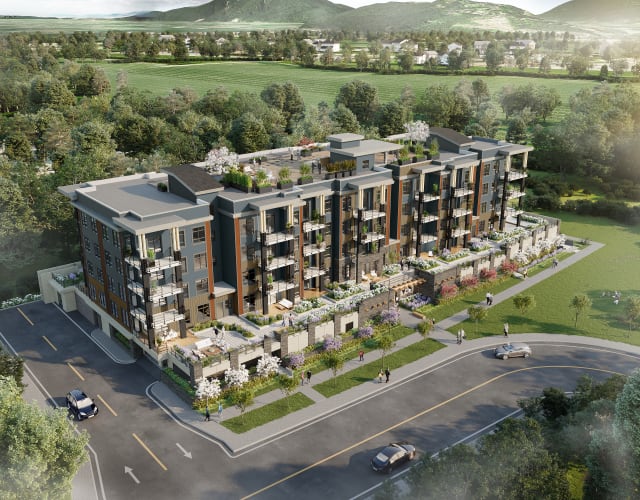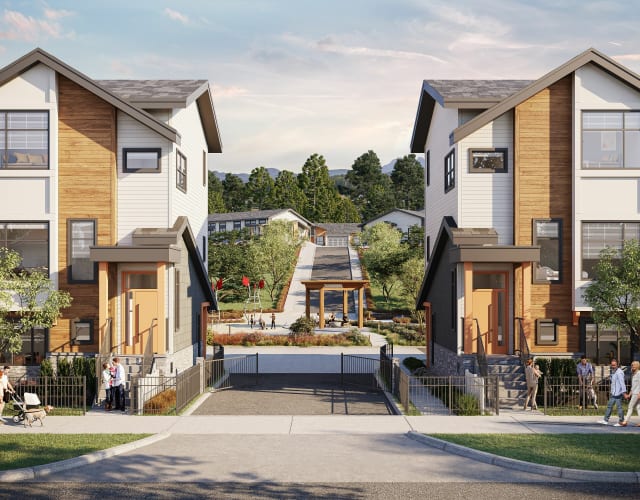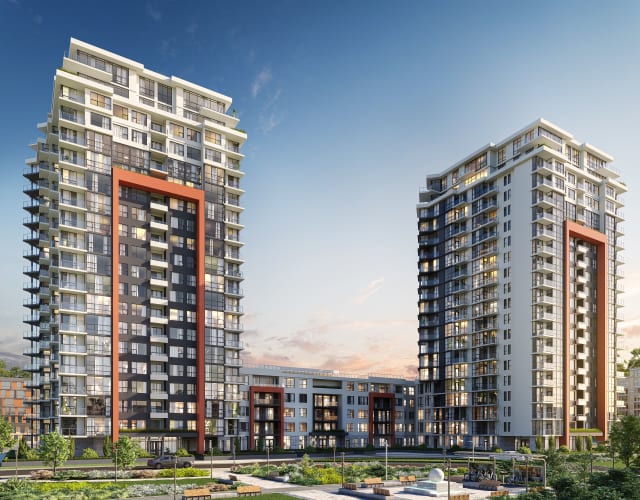Balancing Safety and Cost: Reevaluating Building Codes Amidst Canada's Housing Crisis
by RealSpace
Canada is facing a housing affordability crisis that has reached alarming levels recently. With soaring property prices, limited housing supply, and increasing demand, many Canadians find it challenging to secure affordable housing. While multiple factors contribute to this crisis, building codes significantly shape the housing landscape. Designed to ensure safety, health, and environmental sustainability, building codes set the standards for construction practices across the country. However, stringent regulations can also lead to higher construction costs, impacting housing affordability for developers and buyers.

This article explores the delicate balance between maintaining essential safety standards and reducing the financial burden on developers and buyers in Canada. By reevaluating building codes within the Canadian context, we can identify opportunities to streamline regulations, adopt innovative construction methods, and make housing accessible without compromising safety.
The Role of Building Codes in Canada
Purpose and Structure of Canadian Building Codes
In Canada, building codes are established to ensure that buildings are safe, healthy, and energy-efficient. The primary code is the National Building Code of Canada (NBC), which serves as a model code that provinces and territories can adopt and modify to suit their regional needs. The NBC is part of the National Model Codes developed by the Canadian Commission on Building and Fire Codes under the National Research Council of Canada (NRC).
Key Objectives of the NBC:
- Safety: Protect occupants from structural failure, fire, and environmental dangers.
- Health: Ensure proper ventilation, sanitation, and indoor environmental quality.
- Accessibility: Provide barrier-free access for people with disabilities.
- Energy Efficiency: Promote sustainable construction practices to reduce energy consumption.
Provincial and Territorial Adoption
While the NBC serves as a model, each province and territory is responsible for adopting and enforcing building codes within its jurisdiction. Some regions adopt the NBC with minimal changes, while others, like Ontario and British Columbia, have their own codes that incorporate or expand upon the NBC:
- Ontario Building Code (OBC)
- British Columbia Building Code (BCBC)
- Quebec Construction Code
This decentralized approach allows regions to address specific local needs, such as climate conditions and environmental concerns, but it can also lead to inconsistencies and complexities in compliance.
The Impact of Building Codes on Housing Costs in Canada
Building codes, while essential for safety and sustainability, can significantly influence construction costs in Canada. Compliance often requires additional materials, specialized labour, and time-consuming administrative processes, all contributing to higher housing prices.
Factors Contributing to Increased Costs
- Material Requirements: Codes may mandate using specific materials suited for Canada's diverse climates, such as enhanced insulation for cold regions or moisture-resistant materials for wet climates. These materials can be more expensive.
- Labour and Expertise: Specialized labour may be needed to meet code requirements, such as certified energy auditors for energy efficiency compliance or engineers for seismic design in areas like British Columbia.
- Administrative Processes: Obtaining permits and approvals can be complex due to varying provincial regulations and the need for multiple approvals from different agencies.
- Design Constraints: Codes can limit design flexibility, potentially leading to less efficient use of space and higher costs. For example, requirements for minimum room sizes or accessibility features can increase a building's overall footprint.
Canadian Case Studies
- Energy Efficiency Standards: The introduction of energy efficiency requirements, such as those in the BC Energy Step Code, has increased upfront costs for builders, even though they offer long-term savings for homeowners through reduced energy bills.
- Seismic Requirements in British Columbia: Enhanced structural requirements to withstand earthquakes have increased construction costs in regions like Vancouver and Victoria.
- Accessibility Features: Ontario's Building Code includes stringent accessibility requirements, which, while promoting inclusivity, can add to construction costs due to additional design and material considerations.
Reevaluating Building Codes: Strategies for Balance in Canada
Reevaluating building codes and identifying opportunities for cost reduction while maintaining high standards are essential to addressing Canada's housing crisis without compromising safety.
1. Embracing Performance-Based Codes
Current Situation: Canada's building codes are predominantly prescriptive, specifying exact methods and materials. Transitioning towards performance-based codes can allow builders more flexibility to meet safety objectives cost-effectively.
Benefits in the Canadian Context:
- Innovation Encouragement: Encourages using new materials and technologies suitable for Canada's varied climates.
- Regional Adaptation: Allows builders to tailor solutions that address local environmental conditions and resource availability.
Implementation Challenges:
- Regulatory Harmonization: Requires coordination among provinces and territories to ensure consistency.
- Training and Expertise: Builders and inspectors need education on assessing performance criteria.
2. Streamlining Administrative Processes
Challenges:
- Complex Permitting: Builders often face delays due to overlapping jurisdictions and regulatory bodies.
- Variation Across Jurisdictions: Different provinces and municipalities have their own processes and timelines.
Strategies:
- Digital Permitting Systems: Implementing online applications, as seen in some municipalities like Calgary, to speed up the process.
- One-Stop Shops: Creating centralized agencies to handle all aspects of the permitting process.
- Standardized Forms and Requirements: Harmonizing documentation across regions to simplify compliance.
3. Encouraging Modular and Prefabricated Construction
Advantages for Canada:
- Controlled Environments: Building components in factories reduces weather-related delays, which is important in regions with harsh climates.
- Quality Control: Standardization ensures components meet code requirements.
- Cost Savings: Potentially lowers labour costs and reduces waste.
Considerations:
- Code Acceptance: Ensuring that modular components are recognized under provincial building codes.
- Transportation: Managing logistics across Canada's vast geography.
Examples:
- Alberta and Saskatchewan: Growing use of modular construction for residential and commercial projects.
- Northern Communities: Prefabricated homes offer solutions for remote areas with limited construction seasons.
4. Updating Codes to Reflect Technological Advances
Opportunities:
- Advanced Materials: Incorporating materials like cross-laminated timber (CLT), which is sustainable and suitable for Canada's timber resources.
- Energy-Efficient Technologies: Integrating renewable energy systems, such as solar panels, in code requirements with cost-effective incentives.
Process:
- Collaborative Code Development: Involving industry stakeholders in the code revision process.
- Pilot Projects: Testing new materials and methods in controlled settings before widespread adoption.
5. Providing Incentives for Affordable Housing
Government Initiatives:
- National Housing Strategy: A 10-year, $55 billion plan by the federal government to improve housing affordability.
- Canada Mortgage and Housing Corporation (CMHC): Offers programs and financing to support affordable housing development.
Incentives:
- Grants and Loans: Financial assistance for projects that meet affordability criteria.
- Tax Rebates: GST/HST rebates for new housing developments.
- Expedited Approvals: Prioritizing affordable housing projects in the permitting process.
6. Enhancing Education and Training
Approach:
- Professional Development: Offering training on new building technologies and code requirements through organizations like the Canadian Home Builders' Association (CHBA).
- Apprenticeship Programs: Government-supported programs to develop skilled tradespeople.
Outcomes:
- Improved Compliance: A better understanding of codes leads to higher compliance rates.
- Innovation Adoption: Skilled workers are more capable of implementing new building methods.
7. Risk-Based Approaches
Methodology:
- Focus on High-Risk Areas: Allocating resources to critical safety issues, such as fire safety in multi-unit buildings.
- Simplifying Low-Risk Requirements: Reducing or eliminating regulations that add cost but minimal safety benefits.
Advantages:
- Efficiency: Streamlines compliance efforts towards the most impactful areas.
- Cost Reduction: Lowers expenses associated with non-critical code requirements.
Potential Challenges and Solutions in Canada
Regulatory Fragmentation
- Challenge: Different building codes across provinces and territories can complicate compliance for developers operating in multiple regions.
- Solution: Promote interprovincial collaboration to harmonize codes where possible, reducing barriers and encouraging consistency.
Balancing Climate and Geographic Diversity
- Challenge: Canada's vast size and varied climates require region-specific codes, making a one-size-fits-all approach impractical.
- Solution: Implement core national standards with regional adaptations, ensuring safety while accommodating local conditions.
Public Perception and Acceptance
- Challenge: Resistance from the public or industry stakeholders to changes in building codes.
- Solution: Engage in transparent communication, highlighting the benefits of code reevaluation for affordability and safety.
Canadian Case Studies
1. British Columbia's Energy Step Code
Overview: An optional compliance path in the BC Building Code that local governments can adopt to encourage or require energy efficiency beyond the base code.
Results:
- Innovation: Encouraged builders to adopt new technologies and practices.
- Challenges: Increased upfront costs, though offset by long-term energy savings for homeowners.
2. Toronto's Modular Housing Initiative
Overview: A program to quickly build affordable housing units using modular construction techniques.
Impact:
- Speed: Reduced construction timelines, addressing urgent housing needs.
- Cost Efficiency: Lowered costs compared to traditional construction methods.
- Code Compliance: Worked within existing building codes, demonstrating feasibility.
3. Quebec's Acceptance of CLT Construction
Overview: Quebec updated its building code to allow the construction of taller wood buildings using cross-laminated timber.
Benefits:
- Sustainability: Promotes the use of renewable resources.
- Economic Growth: Supports the local timber industry.
- Affordability: Potentially reduces construction costs due to material efficiency.
Recommendations for Canada
- National Collaboration: Foster cooperation among federal, provincial, and territorial governments to harmonize building codes where practical.
- Innovative Pilot Programs: Encourage pilot projects that test new materials and methods, providing data to inform code updates.
- Financial Incentives: Expand government incentives for affordable housing projects that meet safety standards.
- Education and Outreach: Invest in training programs for builders and inspectors, emphasizing new technologies and compliance methods.
- Regulatory Review Committees: Establish committees with diverse stakeholders to assess and update building codes regularly.
- Public-Private Partnerships: Leverage collaborations between governments and private developers to fund and build affordable housing.
Conclusion
Reevaluating building codes in Canada is a critical step toward addressing the housing crisis without compromising safety. By adopting flexible, performance-based regulations, streamlining administrative processes, and embracing innovation, Canada can reduce construction costs and increase housing affordability. This requires a concerted effort from all levels of government, industry professionals, and communities.
Balancing safety and cost is not only possible but essential. With thoughtful reevaluation and strategic action, Canada can ensure that more people have access to safe, affordable housing. By fostering innovation, promoting collaboration, and maintaining high safety standards, we can build a housing landscape that meets the needs of Canadians today and in the future.
References
- National Building Code of Canada (NBC) - National Research Council Canada.
- Canada's National Housing Strategy - Government of Canada.
- Energy Step Code - Government of British Columbia.
- Modular Housing Initiative - City of Toronto.
- Canadian Home Builders' Association (CHBA) - Educational resources and advocacy.
- Cross-Laminated Timber in Quebec - Quebec Construction Code updates.
